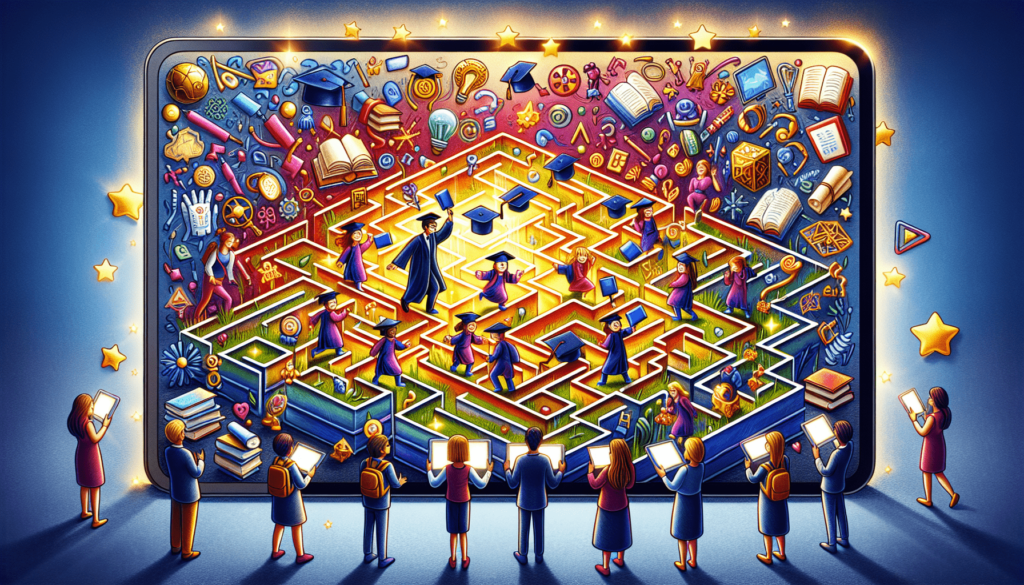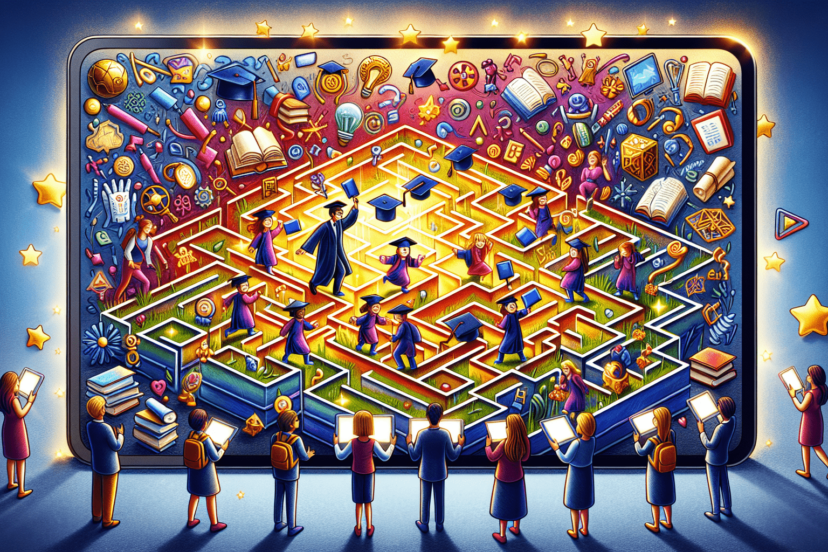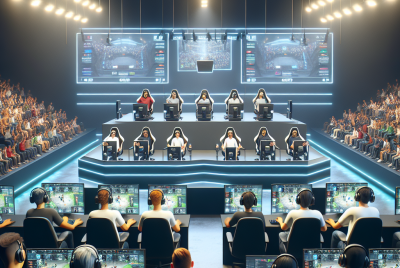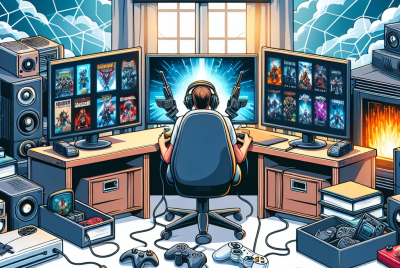Designing Educational Games for Effective Learning
Welcome to “Designing Educational Games for Effective Learning,” a journey where we delve into the intricate world of creating engaging and educational digital experiences. Together, we explore the principles and strategies essential for developing games that not only entertain but also enhance learning and comprehension. Our article will guide us through the key elements of game design, such as curriculum integration, learner engagement, and the balance between challenge and achievability. By the end, we will possess a toolkit of ideas and approaches that can transform our educational games into powerful learning tools. Let’s embark on this enlightening adventure to jointly unlock the potential of educational gaming! How do you design educational games?
That’s the question we often find ourselves asking. If you think about it, educational games bridge the gap between fun and learning. But can we truly design games that are both entertaining and educational? Well, the short answer is yes! However, the process is far from simple. Join us as we embark on this journey to explore the crucial elements of designing educational games for effective learning.

Understanding Educational Games
Before diving into the design process, it’s essential to grasp what educational games are. Educational games are interactive activities designed to teach specific skills, concepts, or knowledge in an entertaining manner. They combine the best of both worlds: the engagement of games and the educational value of traditional learning methods.
Key Characteristics of Educational Games
Educational games should ideally portray these characteristics:
| Characteristic | Description |
|---|---|
| Engagement | Capturing the players’ interest and motivating them to continue playing. |
| Educational Value | Providing substantial learning material aligned with educational goals. |
| Interactivity | Allowing players to make meaningful choices and perform actions that influence the game’s outcome. |
| Feedback | Offering instant feedback to reinforce learning. |
The Importance of Designing Educational Games
Why should we put effort into designing educational games? The answer lies in their potential to transform learning experiences.
Enhancing Retention and Understanding
Studies have shown that active learning through educational games improves retention rates compared to passive learning methods. By engaging with the material, players are more likely to understand and remember concepts.
Catering to Different Learning Styles
Educational games cater to various learning styles—be it visual, auditory, reading/writing, or kinesthetic. A well-designed game can incorporate multiple sensory modalities and therefore appeal to a broader audience.
Increasing Motivation
Let’s face it, traditional learning methods can sometimes be monotonous. Educational games add an element of fun that keeps learners motivated and invested in their educational journey.
Steps to Design an Educational Game
Now that we understand the significance of educational games, let’s break down the steps for designing one.
1. Define Learning Objectives
The first step is to clearly outline the learning objectives. What do we want learners to achieve by the end of the game? These objectives should be specific, measurable, achievable, relevant, and time-bound (SMART).
2. Identify Target Audience
Who will be playing the game? Understanding the target audience’s age, educational background, interests, and existing knowledge is crucial for tailoring the content and difficulty of the game.
3. Choose the Right Game Mechanics
Game mechanics are the rules and procedures that guide the player’s actions and integrate them into the game world. The choice of mechanics should align with the learning objectives and enhance the educational experience.
Examples of Game Mechanics:
| Game Mechanic | Description |
|---|---|
| Quizzes | Players answer questions or solve problems. |
| Puzzles | Players solve puzzles to progress. |
| Simulations | Players engage in simulations that mimic real-world scenarios. |
| Role-Playing | Players assume the roles of characters and make decisions. |
4. Develop the Game Narrative
A compelling storyline can significantly enhance the engagement factor. Crafting a narrative that is both interesting and educational ensures that learners remain invested in the game.
5. Design Game Levels and Challenges
Create levels and challenges that gradually increase in difficulty. This progression keeps the game challenging yet manageable, maintaining the player’s interest and providing a sense of achievement upon completion.
6. Incorporate Feedback Mechanisms
Instant feedback is crucial in educational games. Whether it’s through pop-up messages, scores, or progress bars, providing regular feedback helps players understand their mistakes and learn correct solutions.
7. Test and Iterate
Testing is an indispensable part of the design process. Playtest the game with your target audience, gather feedback, and make necessary adjustments. Iteration ensures that the final product is polished and effective.
Balancing Fun and Education
One of the biggest challenges in designing educational games is striking the right balance between fun and education. Lean too much towards fun, and the educational value may be lost. Focus too much on education, and the game risks becoming boring.
Engaging Gameplay
Engagement is key to a successful educational game. Utilize elements such as:
- Rewards and Incentives: Offer rewards like points, badges, or unlockable content to keep players motivated.
- Challenges and Competition: Introduce challenges and competitive elements to keep players on their toes.
- Visual and Auditory Stimuli: Use appealing graphics, animations, and sounds to create an immersive experience.
Educational Integration
Education should be seamlessly integrated into the gameplay. Here are some ways to achieve that:
- Contextual Learning: Embed learning material within the game context to make it relevant.
- Problem-Solving: Encourage critical thinking by having players solve problems related to the educational content.
- Reflection: Include opportunities for players to reflect on what they’ve learned through in-game activities or post-game discussions.

Case Studies of Successful Educational Games
To gain a better understanding, let’s look at some successful educational games and analyze what makes them effective.
Minecraft: Education Edition
Learning Objectives:
- Enhance creativity
- Foster collaboration
- Teach subjects like mathematics, history, and programming
Success Factors:
- Offers teacher controls and tutorials for integrating into curriculum
- Interactive and immersive gameplay
- Encourages problem-solving and critical thinking
Duolingo
Learning Objectives:
- Teach new languages
Success Factors:
- Gamified language lessons with points, levels, and rewards
- Bite-sized lessons that fit into busy schedules
- Engaging visuals and interactive exercises
The Oregon Trail
Learning Objectives:
- Teach American history
- Develop critical thinking and decision-making skills
Success Factors:
- Engaging narrative that immerses players in historical scenarios
- Realistic challenges that require strategic thinking
- Interactive elements like hunting and trading
Common Pitfalls to Avoid
While there are plenty of opportunities, designing educational games also comes with its share of challenges. Here are some common pitfalls to steer clear of:
1. Overcomplicating the Game
Complexity can deter players, especially those who are new to gaming. Keep it simple and intuitive.
2. Focusing Too Much on Assessments
While assessments are important, they shouldn’t overshadow the gameplay. Constant testing can be discouraging and take the fun out of the game.
3. Ignoring User Feedback
User feedback is invaluable. Ignoring it could lead to a product that doesn’t meet the expectations or needs of the target audience.
4. Underestimating Development Time
Designing an educational game is time-consuming. Rushing through the development process can result in a subpar product with numerous bugs and issues.
Tools and Resources
The good news is that several tools and resources can assist us in designing educational games. Here are some popular ones:
Game Development Platforms
| Platform | Description |
|---|---|
| Unity | A versatile platform suitable for both 2D and 3D games. Great for incorporating complex mechanics. |
| Scratch | A beginner-friendly platform often used in educational settings to introduce coding. |
| Twine | Ideal for creating text-based games and interactive stories. |
Educational Content Resources
| Resource | Description |
|---|---|
| Khan Academy | Free educational resources across various subjects including videos and practice exercises. |
| Open Educational Resources (OER) | A repository of freely accessible educational content. |
| MIT OpenCourseWare | Free online courses and materials from MIT. |
Future Trends in Educational Games
As technology continues to evolve, so does the potential for educational games. Here are some trends to watch out for:
Virtual Reality (VR) and Augmented Reality (AR)
These technologies can provide immersive learning experiences. For example, VR can transport students to historical sites, while AR can bring abstract concepts to life through interactive simulations.
Adaptive Learning Systems
Adaptive learning systems tailor educational content based on the learner’s performance. These systems can create personalized learning paths within educational games, ensuring that players receive the right level of challenge and support.
Gamification in Formal Education
More schools and educational institutions are incorporating gamified elements into their curriculum. This trend is likely to continue as educators recognize the value of engaging and motivating students through game-based learning.
Conclusion
Designing educational games is indeed a complex yet rewarding endeavor. It’s about creating an experience where learning happens naturally through engagement, interaction, and feedback. From understanding the core principles to balancing fun and education, the process involves careful planning, creativity, and continuous iteration.
Educational games offer immense potential to revolutionize the way we learn. As we continue to embrace technological advancements and explore innovative methods, the future of educational games looks exceedingly promising. So, let’s keep pushing the boundaries and making learning an exciting adventure for all!




